Make sweet, tender, and fluffy baked Japanese sweet potatoes (yaki imo) at home! You won’t believe how naturally sweet they are.
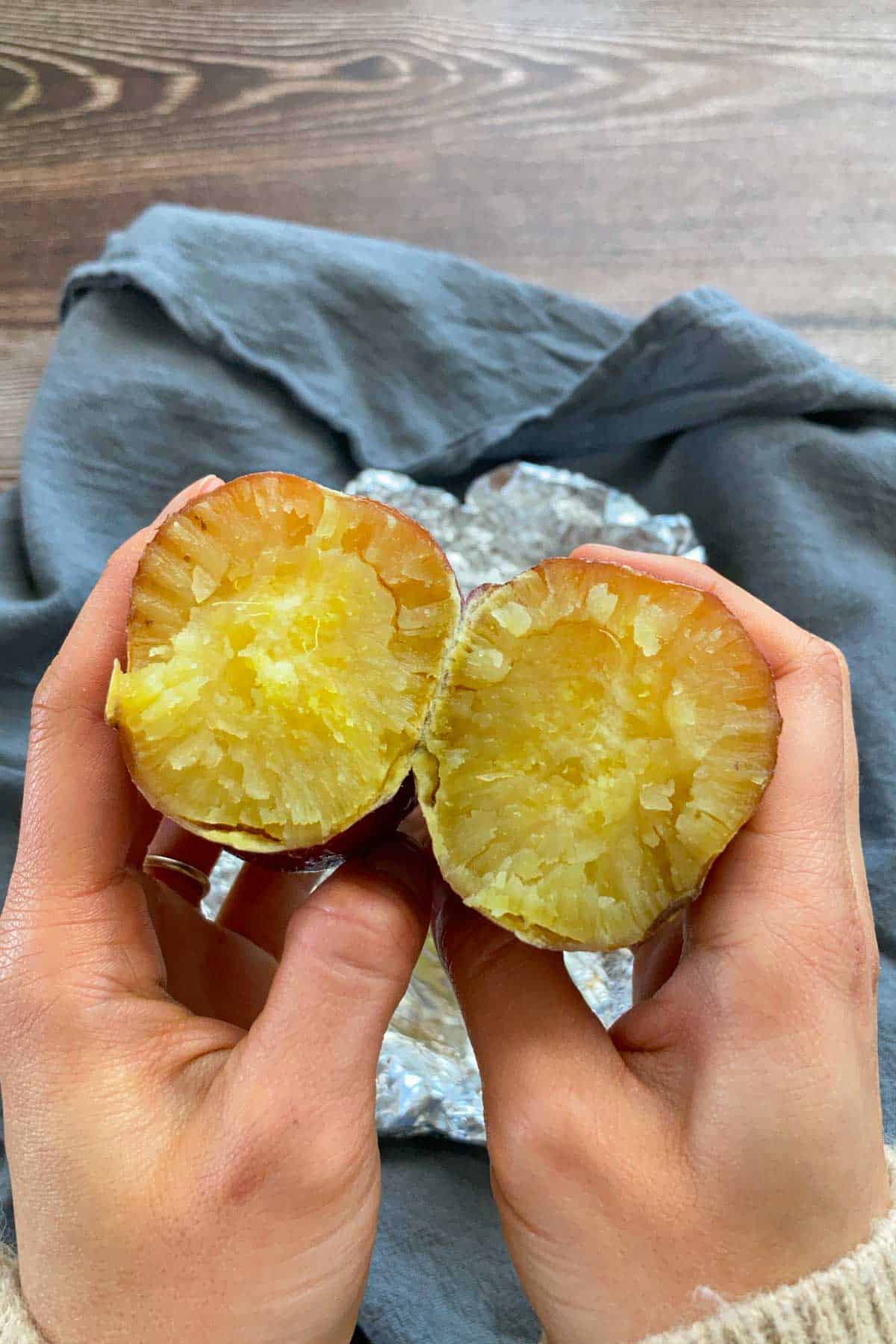
There’s a yaki imo song that (I think) all Japanese people know… “Ishiyaki imo oimo” (basically saying “baked Japanese potatoes”). I always start singing it when the air turns cold!
We usually eat yaki imo on its own, but you can take it to the next level by pairing it with miso butter—just like in my Roasted Sweet Potatoes with Miso Butter and Warm Spices recipe.
Why You'll Love This Recipe
- Natural Sweetness: Baking sweet potatoes at a low temperature for a long time allows β-amylase to convert starch into sugar, enhancing their sweetness.
- Tender and Rich: These baked Japanese sweet potatoes have a texture similar to those traditionally baked with hot stones, like ‘ishiyaki imo’ (stone-baked Japanese sweet potatoes).
- Easy and Healthy Snack: Simply place the sweet potatoes in the oven and wait—no extra effort needed for a healthy, delicious snack!
Notes on Ingredients
See the recipe card for the full ingredients list.
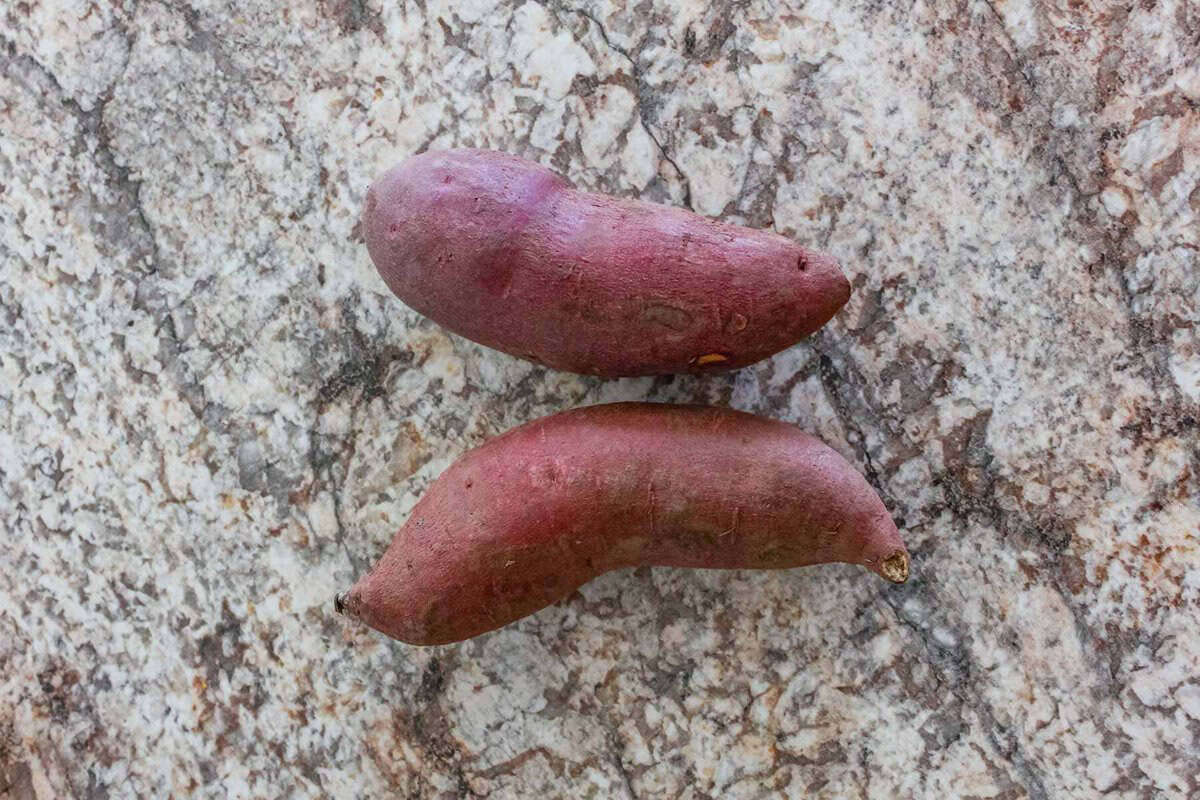
- Japanese Sweet Potatoes: You can’t make this recipe with regular sweet potatoes because they are less sweet and less tender. You can usually find them at Asian grocery stores, online Asian grocery stores, or Trader Joe's.
How to Make Baked Japanese Sweet Potatoes

Step 1: Wash the Japanese sweet potatoes, wipe away excess water, and poke a few holes with a fork
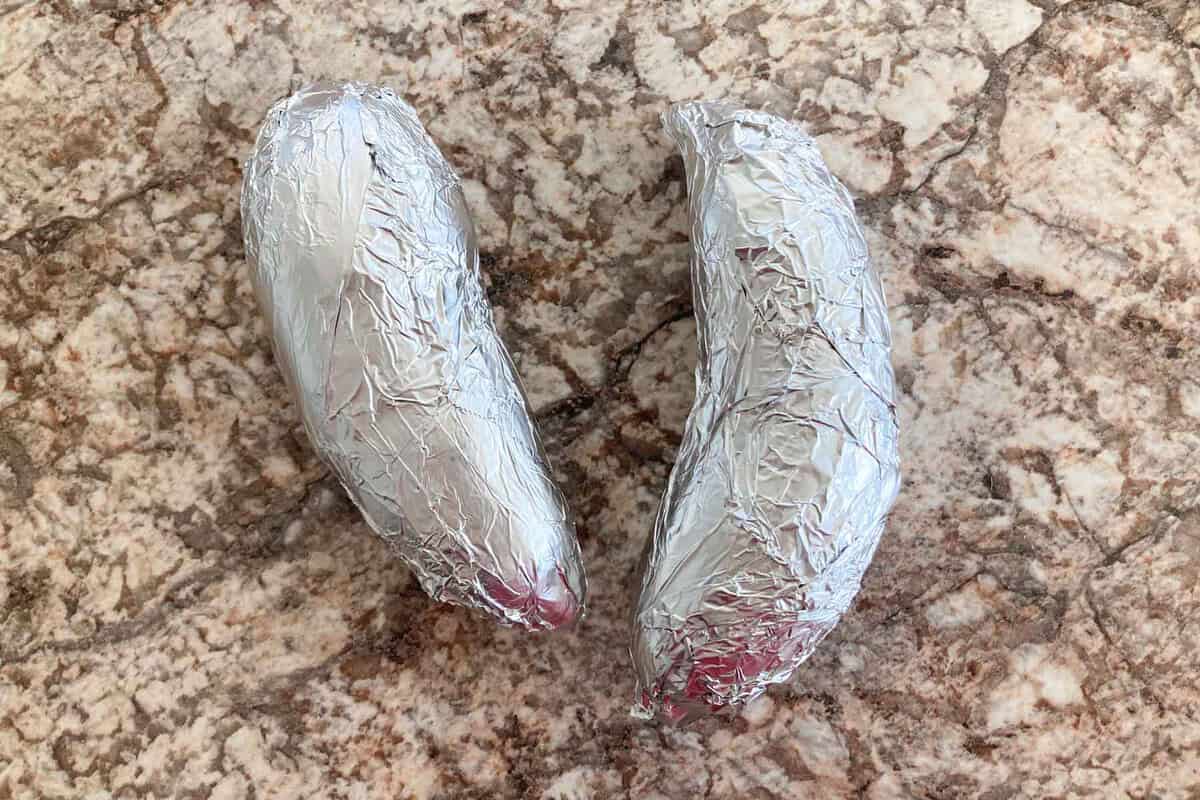
Step 2: Wrap them tightly in aluminum foil
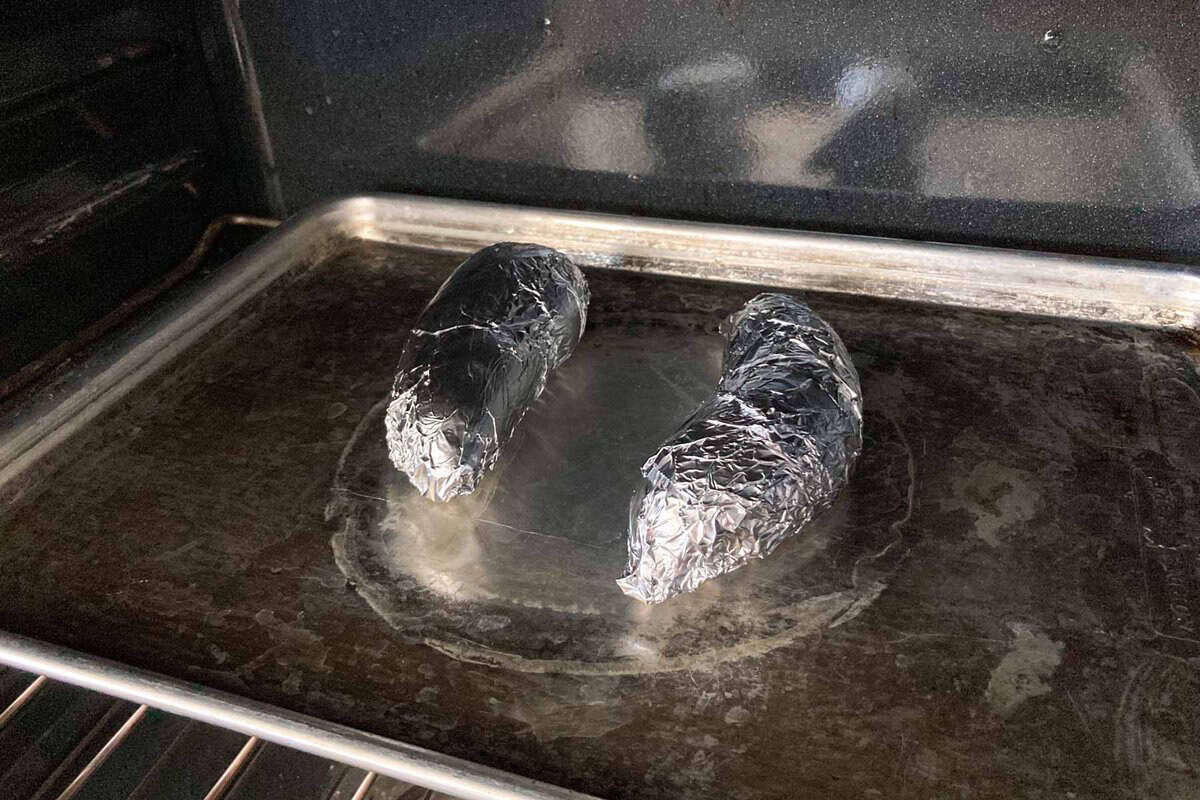
Step 3: Place them in the oven or air fryer to bake, then let them rest inside for 10–15 minutes
Kurumi's Tips
- Slow Cooking for Sweetness: Be patient and cook the sweet potatoes slowly for the sweetest yakiimo.
- Wrapping Method: Wrap the sweet potatoes tightly in aluminum foil to prevent them from drying out. I tested wrapping them with a wet paper towel and aluminum foil as well, but they turned out a bit too moist like steamed sweet potatoes rather than tender and rich. For a more stone-baked texture, I prefer not to use a wet paper towel.
What to Eat with Baked Japanese Sweet Potatoes
Baked Japanese sweet potatoes (Yakiimo) are typically enjoyed on their own, without any seasonings or toppings.
But if you want to switch things up, try adding miso butter for a rich, savory twist. This miso butter sweet potato recipe uses regular sweet potatoes, but Yakiimo works great for a sweeter flavor!
You can also use leftover Yakiimo to make healthy desserts and snacks like Sweet Potato (yes, that’s really its name!) and Hoshi Imo (dried Yakiimo).
Storage & Reheating Instructions
Storage Instructions
- In the Fridge (3-4 days): Wrap each whole baked Japanese sweet potato tightly in plastic wrap, place it in an airtight bag, and store it in the fridge for 3–4 days. Eat cut sweet potatoes as soon as possible.
- In the Freezer (1 month):
- Whole: Wipe off any surface moisture, wrap each potato tightly in plastic wrap, and place them in an airtight bag.
- Halved: Cut the sweet potatoes in half, wrap them tightly in plastic wrap, and store them in an airtight bag.
- Mashed: Mash the baked sweet potatoes, store them in an airtight bag, and flatten them for easier storage.
Reheating Instructions
- From the Fridge:
- Wrap each baked sweet potato in aluminum foil and heat in a non-preheated oven at 355°F (180°C) for 10–15 minutes, then turn off the oven and leave them inside for 10 minutes.
- Alternatively, microwave for about 2 minutes.
- From the Freezer: Wrap each baked sweet potato in aluminum foil and heat in a non-preheated oven at 355°F (180°C) for 20–25 minutes, then turn off the oven and leave them inside for 10 minutes.
- Enjoying Frozen Baked Sweet Potatoes: You can eat frozen baked Japanese sweet potatoes straight from the freezer! They have an ice cream-like texture and taste delicious 😊
FAQs
Sweet potatoes were introduced to Japan by other countries, such as Peru and/or Mexico, around the 1600s.
They are called satsumaimo (さつまいも) because Satsuma (now Kagoshima Prefecture) was the main region where they were cultivated.
Japanese sweet potatoes have less water content and are starchier, making them sweeter, more tender, and fluffier than regular American sweet potatoes. This is why they taste delicious even on their own.
Yams are often confused with sweet potatoes, but they have rough, scaly skin, an earthier taste, and are less sweet than Japanese sweet potatoes.
Korean sweet potatoes are similar to Japanese ones but belong to a different species. They tend to be drier and denser in texture.
More Japanese Snack Recipes
Looking for other recipes like this? Try these:
💌 If you tried this recipe and liked it, I’d love to hear from you! Leave a comment and review below or send a photo of your dish to my email. I’d be so happy to see your creation!
📖Recipe
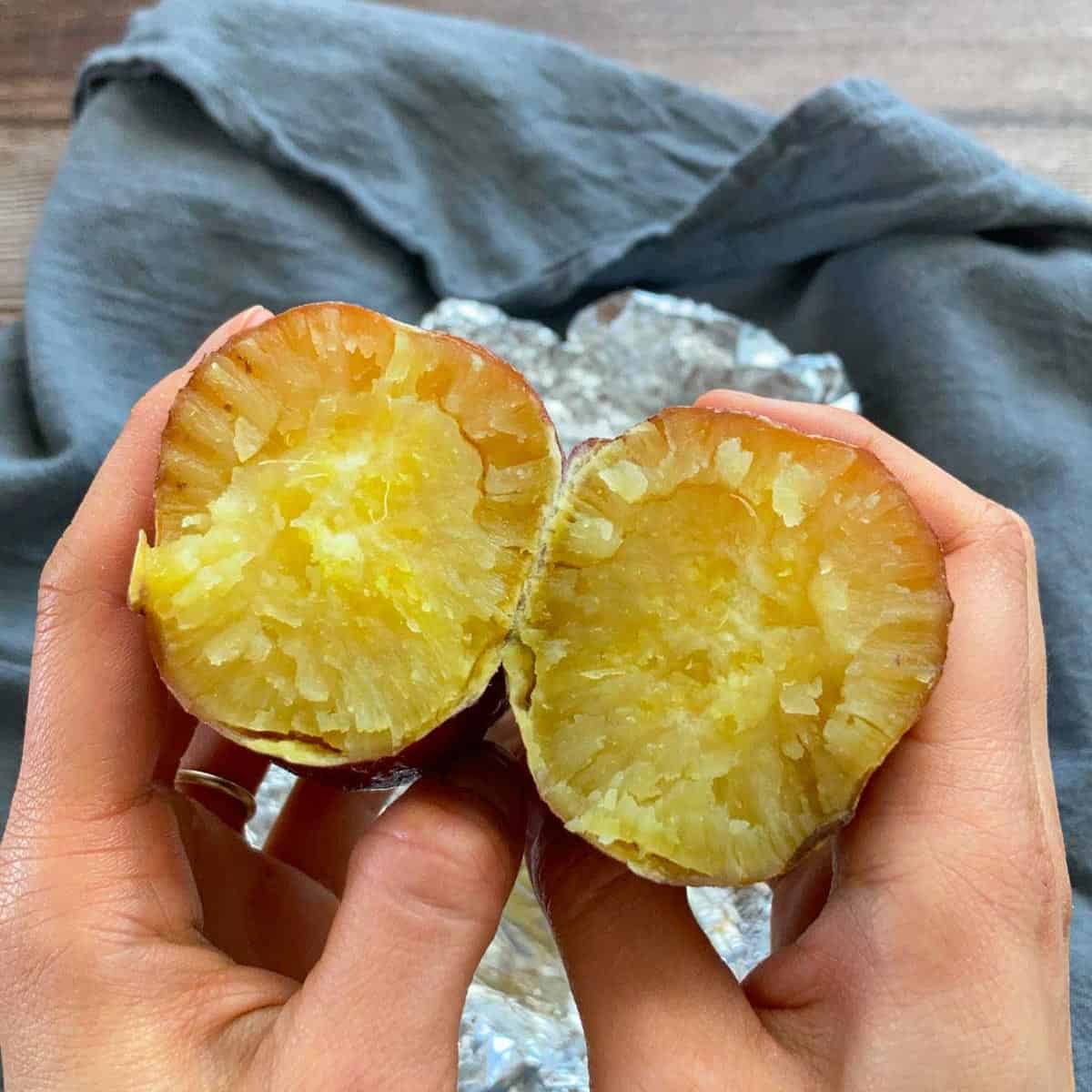
Baked Japanese Sweet Potatoes Oven & Air Fryer (Yaki Imo)
Ingredients
Method
- Prepare the Sweet Potatoes: Wash and wipe 2 Japanese sweet potatoes, then poke some holes with a fork. Wrap each sweet potato tightly in aluminum foil.
- Bake:- Oven: Place them on a baking tray in a non-preheated oven. Turn it on and bake at 320°F (160°C) for 90 minutes. Flip them halfway through baking.- Air Fryer: Bake at 300°F (150°C) for 60 minutes. Flip them halfway.
- Rest: When the timer goes off, turn off the oven (or air fryer) and let the sweet potatoes rest inside for 10–15 minutes.
- Enjoy!
Notes
- Slow Cooking for Sweetness: Be patient and cook the sweet potatoes slowly for the sweetest yakiimo.
- Wrapping Method: Wrap the sweet potatoes tightly in aluminum foil to prevent them from drying out.
- Fridge (3–4 days): Wrap whole baked sweet potatoes in plastic wrap, place them in an airtight bag, and store them in the fridge. Eat cut sweet potatoes as soon as possible.
- Freezer (1 month): Store them whole, halved, or mashed in an airtight bag. Wrap whole and halved potatoes in plastic wrap before freezing.
- Reheating (Fridge): Wrap in aluminum foil and bake at 355°F (180°C) for 10–15 minutes, then leave in the oven for 10 minutes. Or microwave it by itself for 2 minutes.
- Reheating (Freezer): Wrap in aluminum foil and bake at 355°F (180°C) for 20–25 minutes, then leave in the oven for 10 minutes.
- Frozen treat: Eat them straight from the freezer for a sweet, ice cream-like texture! 😊
- Got leftovers? Make this Japanese sweet potato dessert that’s full of fiber, nutrients, and the natural sweetness of yakiimo!
📌Pin This Recipe For Later!
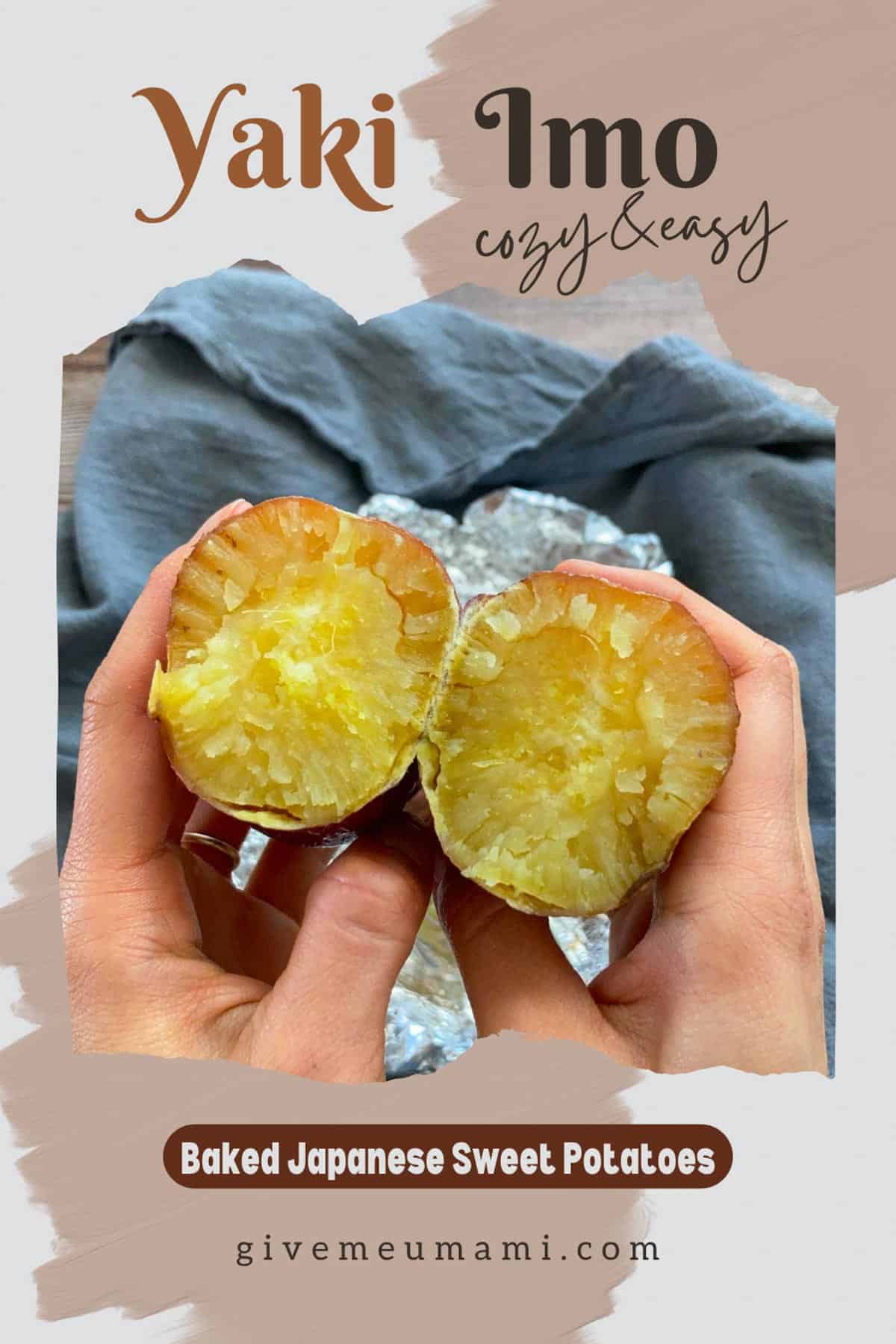

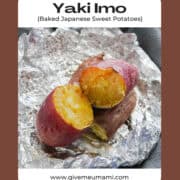
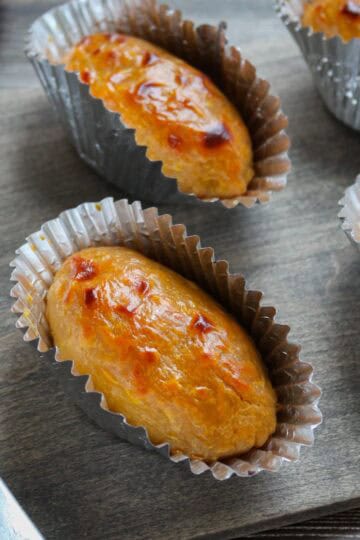

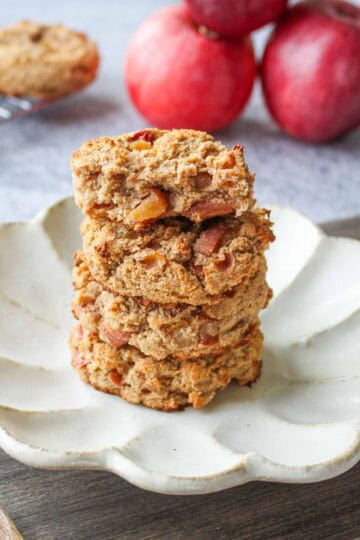



Kurumi says
My pet dog in Japan loved eating yaki-imo (baked Japanese sweet potatoes), so we used to buy a lot from a store there. I'm so glad I can bring that memory back even while I'm in the States! I hope you love it too 🙂